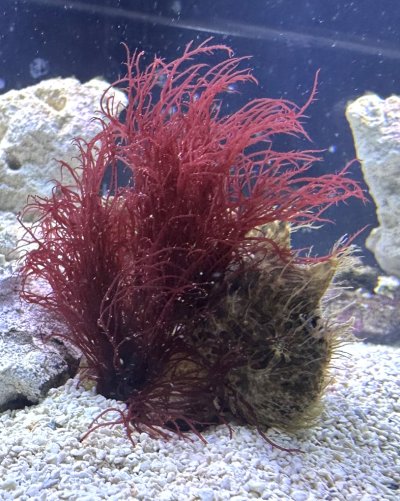Hey all
I recently got a small striated anglerfish, about 4/5”. It’s doing great so far, been feeding saltwater ghost shrimp, peppermint shrimp, green chromis and frozen silverside soaked in selcon. Feeding every 4-5 days currently.
I set up a chaeto grow tank and am also using it to house/hopefully breed feeders. Right now I just have a couple chromis and about 30 ghost shrimp along with chaeto and blue hypnea (which I’m doing chaetogro for). I obviously want something in the tank for ammonia source and am curious if anyone has any opinions on what would work best in the long term? I thought the ghost shrimp may start breeding but I’ve read they can be cannibalistic. Thought of mollies but I want to make sure the anglerfish gets a varied diet too. Just need help figuring out the best feeder to stock for long term ease/success
Anyone in the same boat/have any ideas?

I recently got a small striated anglerfish, about 4/5”. It’s doing great so far, been feeding saltwater ghost shrimp, peppermint shrimp, green chromis and frozen silverside soaked in selcon. Feeding every 4-5 days currently.
I set up a chaeto grow tank and am also using it to house/hopefully breed feeders. Right now I just have a couple chromis and about 30 ghost shrimp along with chaeto and blue hypnea (which I’m doing chaetogro for). I obviously want something in the tank for ammonia source and am curious if anyone has any opinions on what would work best in the long term? I thought the ghost shrimp may start breeding but I’ve read they can be cannibalistic. Thought of mollies but I want to make sure the anglerfish gets a varied diet too. Just need help figuring out the best feeder to stock for long term ease/success
Anyone in the same boat/have any ideas?



















